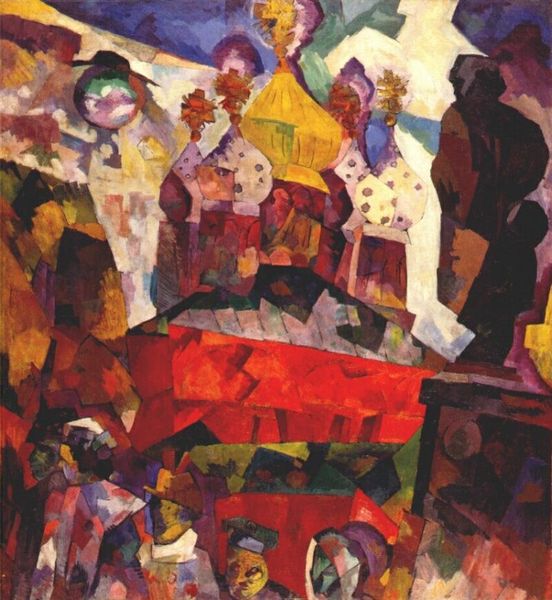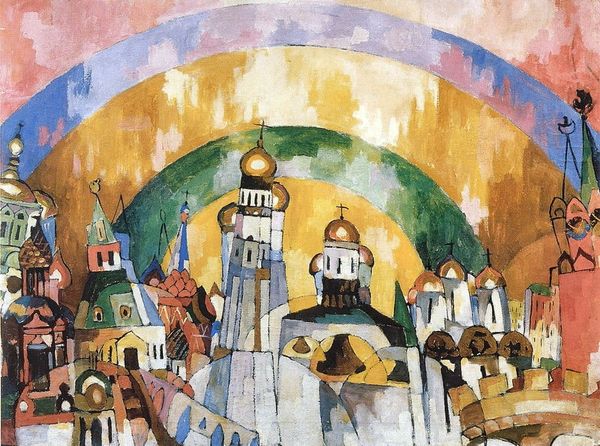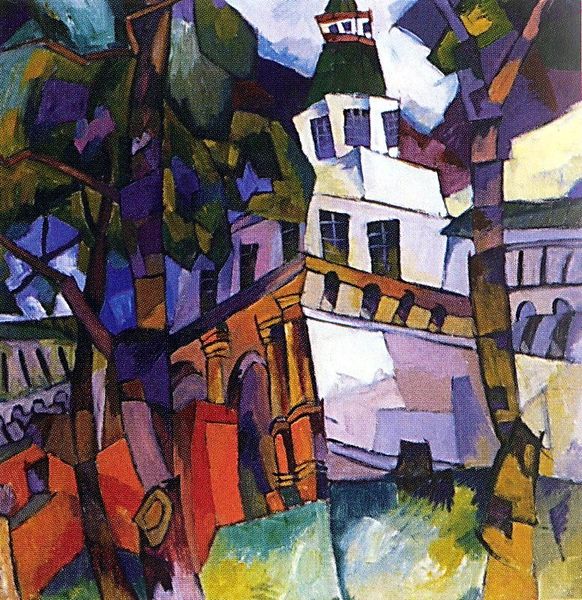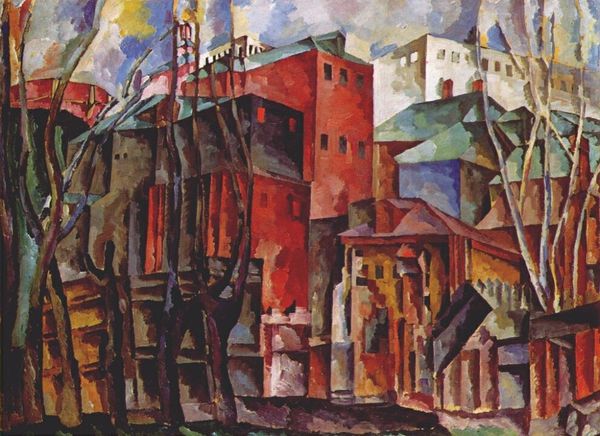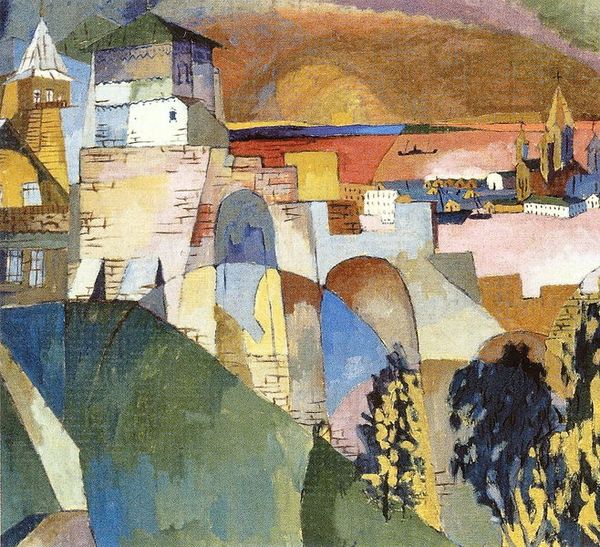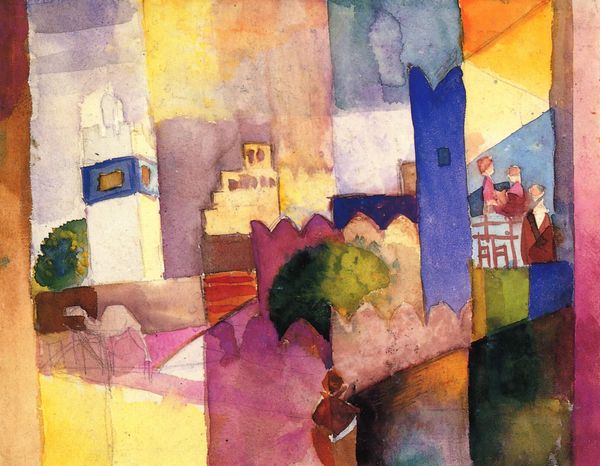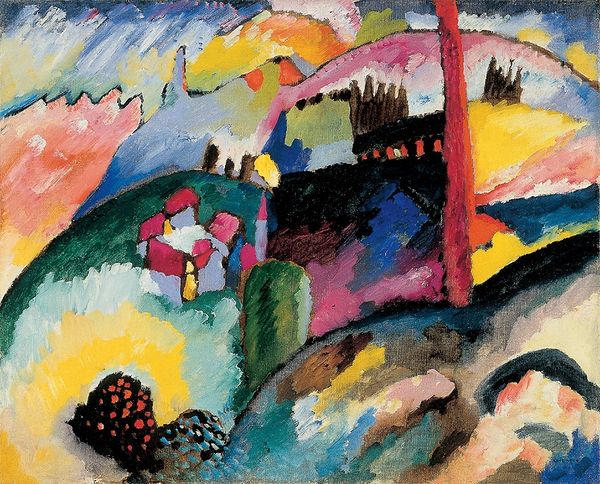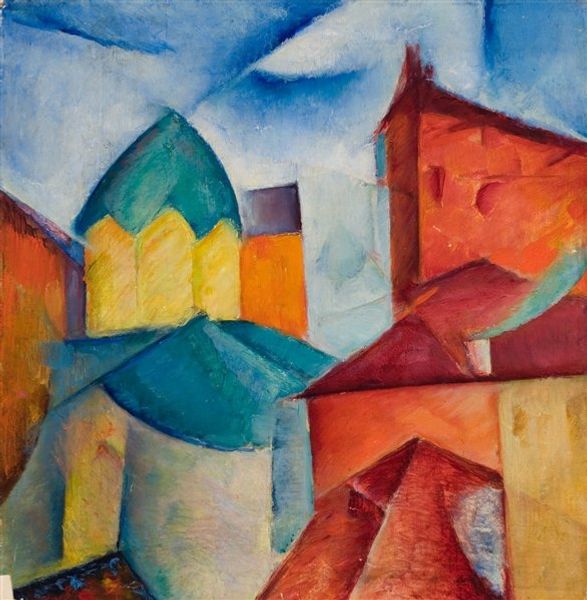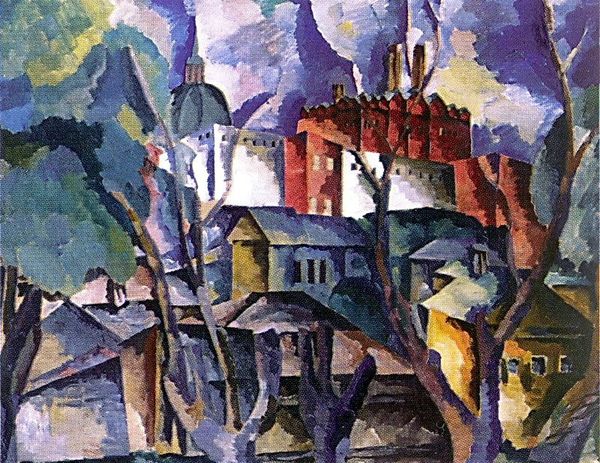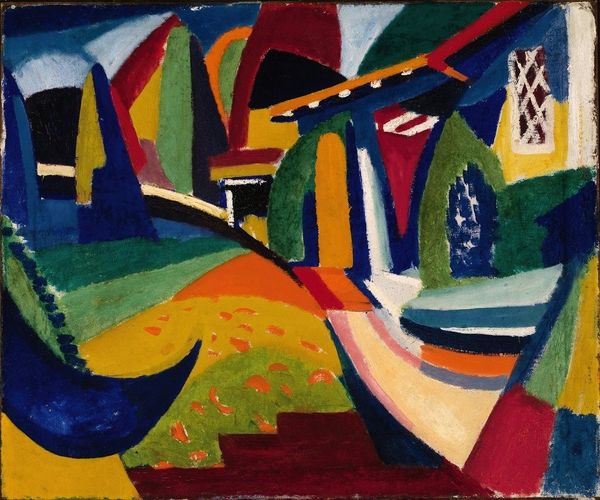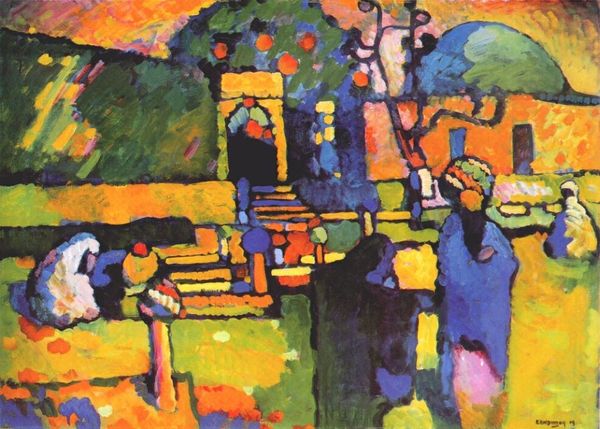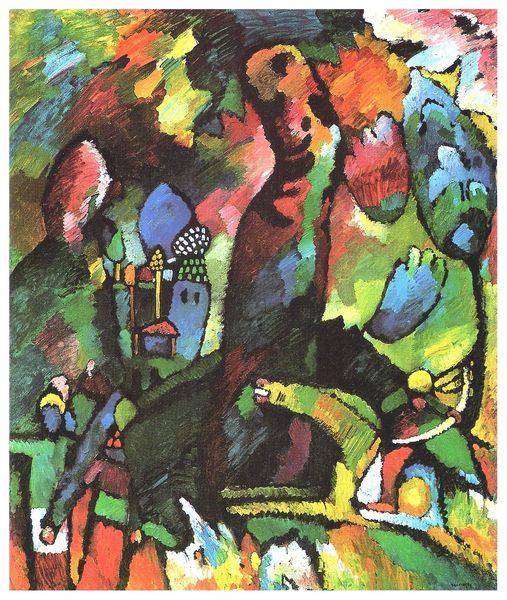
Copyright: Public domain
Curator: Aristarkh Lentulov painted "Churches, New Jerusalem" in 1917, using tempera to depict this cityscape. It's such a striking piece. What's your immediate reaction? Editor: It's… explosive. The colors are so vibrant, and the shapes almost violently intersect. There’s a sense of energy, almost agitation, but somehow held in balance. It’s visually jarring, yet deeply compelling. Curator: Indeed. Lentulov, a key figure in the Russian avant-garde, often portrayed architectural subjects with a Fauvist-Cubist blend. Consider the time: 1917, the year of the Russian Revolution. One wonders if the fracturing of forms reflects the societal upheavals he was experiencing. Editor: Absolutely. The domes, traditionally symbols of stability and spiritual certainty, are deconstructed here. They are still recognizable, yes, but fractured into planes of intense color. Look at those shimmering, almost chaotic, golds and oranges. It feels like an attempt to find transcendence amidst chaos. Are we seeing a world literally being broken apart and reformed before our eyes? Curator: Possibly. It’s tempting to see the geometric shapes, particularly those aggressive, sharp angles, as representative of revolutionary forces tearing at the old order. But remember, Lentulov, like many of his contemporaries, was fascinated with re-envisioning, with building a new visual language that mirrored societal transformation. Editor: But the image goes further. Religious buildings rendered in such a discordant, deconstructed style is really powerful. There is cultural memory at play. A sacred vision clashing with radical aesthetics. A reflection, I think, of an attempt to reinvent national and cultural identity. Curator: He uses the vocabulary of the avant-garde to portray Russia’s cultural heritage, acknowledging its deep roots while simultaneously pushing it towards the future. The painting acts as a site where tradition and progress meet, a crucial position in Russian art during the first decades of the 20th century. Editor: This encounter is, perhaps, the root of its compelling nature, in its raw energy. It is a painting unafraid to challenge our perceptions. I keep seeing the old order straining, bending. Curator: Lentulov gave us a glimpse of a society wrestling with its soul, visualized in colliding colors. Editor: It’s a reminder of art’s role not only to reflect culture but also to actively question and redefine it, as the cultural meanings of churches are reconfigured in this period of transformation.
Comments
No comments
Be the first to comment and join the conversation on the ultimate creative platform.
